Wilfred Owen, probably the greatest poet of World War I, was born in Western Lane, Oswestry, in 1893, the son of an employee of the Cambrian Railways. The family later moved to nearby Shrewsbury and then Birkenhead. Owen was killed in action in November 1918, one week before the end of the war. His works concentrate on the sadness and futility of war.
Photographs and text about Wilfred Owen.
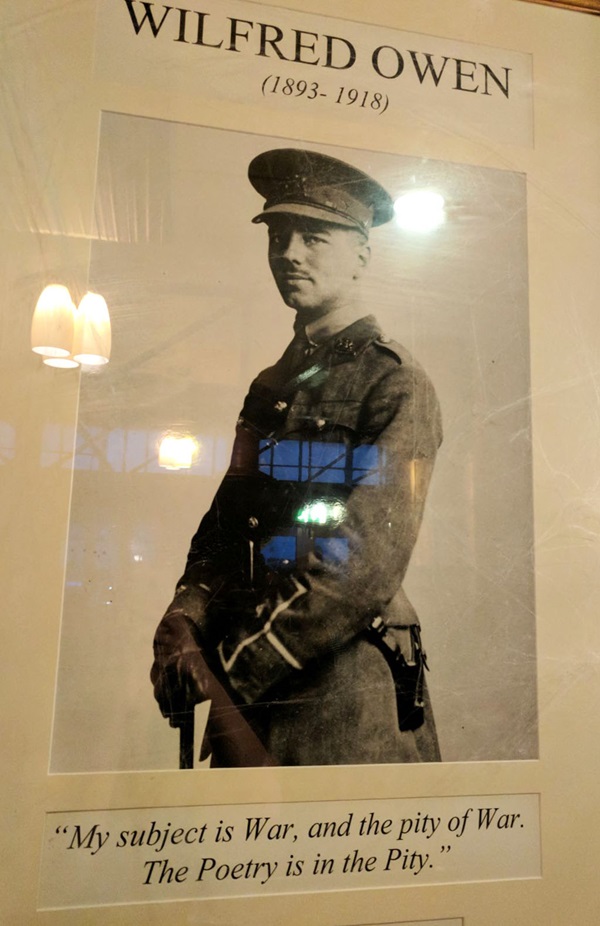
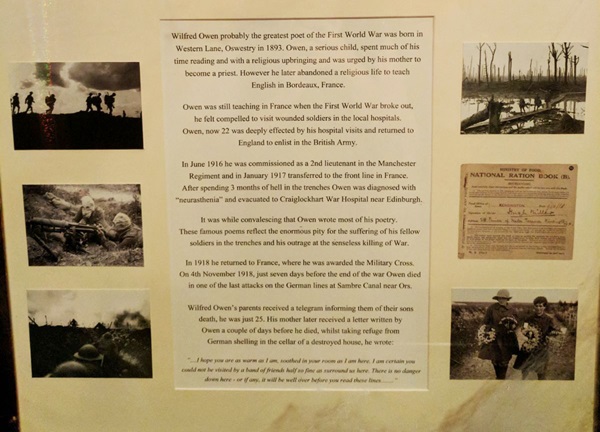
The text reads: Wilfred Owen, probably the greatest poet of the First World War, was born in Western Lane, Oswestry in 1893. Owen, a serious child, spent much of his time reading and with a religious upbringing and was urged by his mother to become a priest. However he later abandoned a religious life to teach English in Bordeaux, France.
Owen was still teaching in France when the First World War broke out, he felt compelled to visit wounded soldiers in the local hospitals. Owen, now 22 was deeply affected by his hospital visits and returned to England to enlist in the British Army.
In June 1916 he was commissioned as a 2nd lieutenant in the Manchester Regiment and in January 1917 transferred to the front line in France. After spending 3 months of hell in the trenches, Owen was diagnosed with neurasthenia and evacuated to Craiglockhart War Hospital near Edinburgh.
It was while convalescing that Owen wrote most of his poetry. These famous poems reflect the enormous pity for the suffering of his fellow soldiers in the trenches and his outrage at the senseless killing of war.
In 1918 he returned to France, where he was awarded the Military Cross. On 4 November 1918, just seven days before the end of the war, Owen died in one of the last attacks on the German lines at Sambre Canal near Ors.
Wilfred Owen’s parents received a telegram informing them of their son’s death, he was just 25. His mother later received a letter written by Owen a couple of days before he died, whilst taking refuge from German shelling in the cellar of a destroyed house, he wrote:
“… I hope you are as warm as I am, soothed in your room as I am here. I am certain you could not be visited by a band of friends half so fine as surround us here. There is no danger down here – or if any, it will be well over before you read these lines… “
Photographs, prints and text about the history of Oswestry.
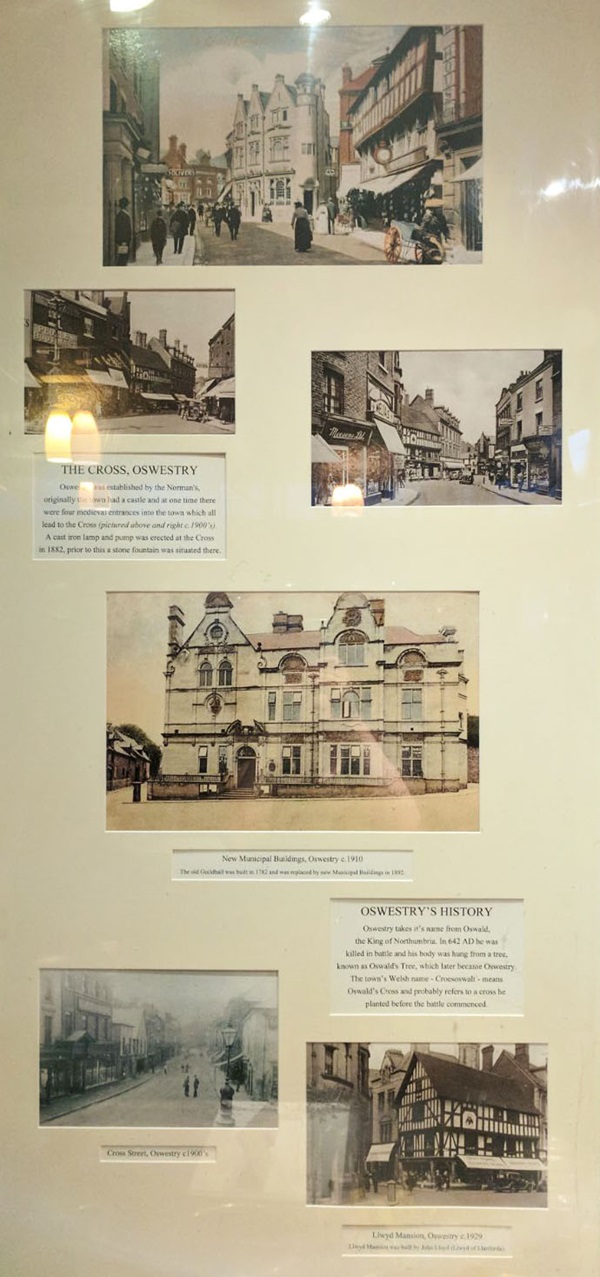
The text reads: Oswestry was established by the Normans, originally the town had a castle and at one time there were four medieval entrances into the town which all lead to the Cross (pictured above and right c1900s). A cast iron lamp and pump was erected at the Cross in 1882, prior to this a stone fountain was situated there.
The old Guildhall was built in 1782 and was replaced by new Municipal Buildings in 1892.
Oswestry takes its name from Oswald, the King of Northumbria. In 642AD he was killed in battle and his body was hung from a tree, known as Oswald’s Tree, which later became Oswestry. The town’s Welsh name – Croesoswalt – means Oswald’s Cross and probably refers to a cross he planted before the battle commenced.
A photograph of Oswestry Corporation Fire Brigade.
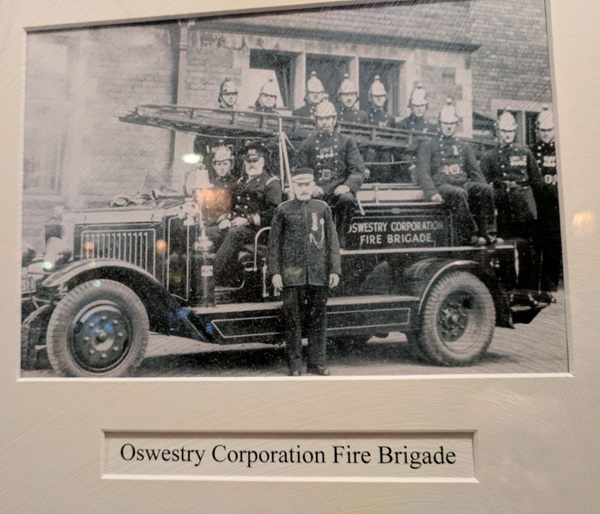
A photograph of Swiss Cottage and Lake Brogyntyn, Oswestry, c1910.
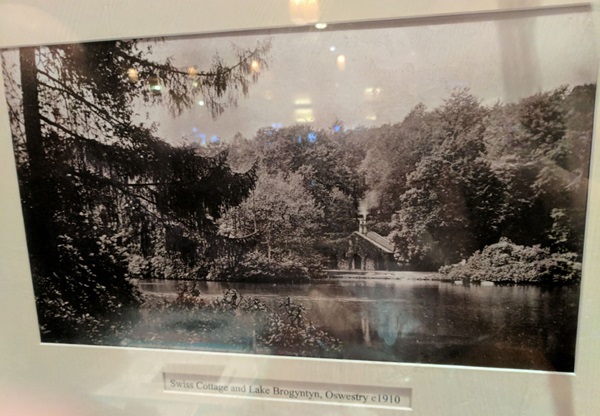
A photograph of model T Fords at EJ Gittins Garage, Lower Brook Street, c1910.
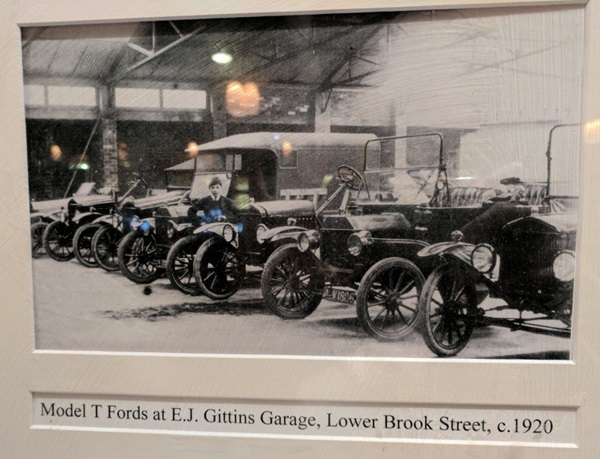
A painting by local artist Kate Wrigglesworth.
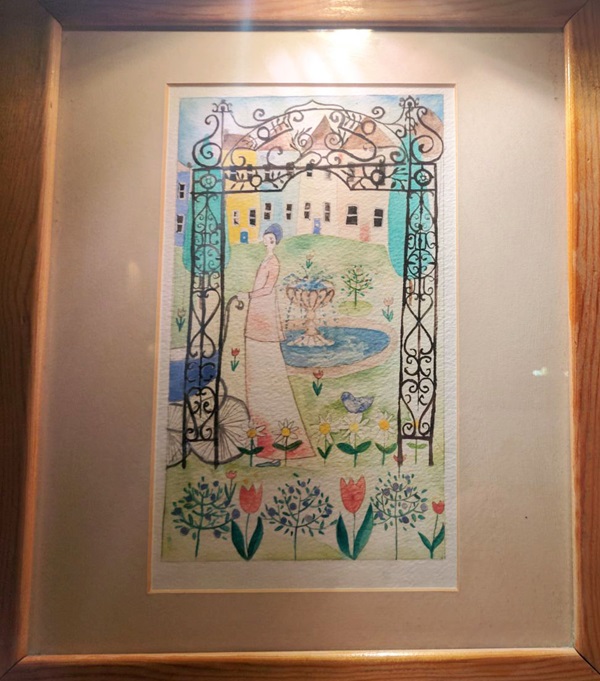
Kate is an artist, designer, illustrator and self-employed, with a degree in theatre design, part-time lecturer and artist in residence.
A watercolour by local artist Beryl Joy Marples.
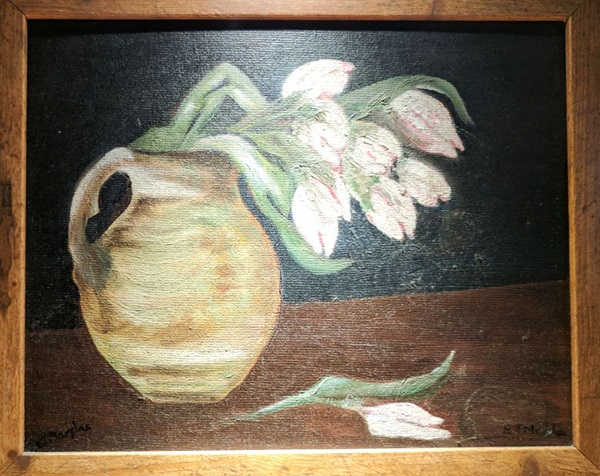
Beryl is a local artist who lives near Kinnerley. She is a member of the Oswestry and District Society of artists.
External photograph of the building – main entrance.
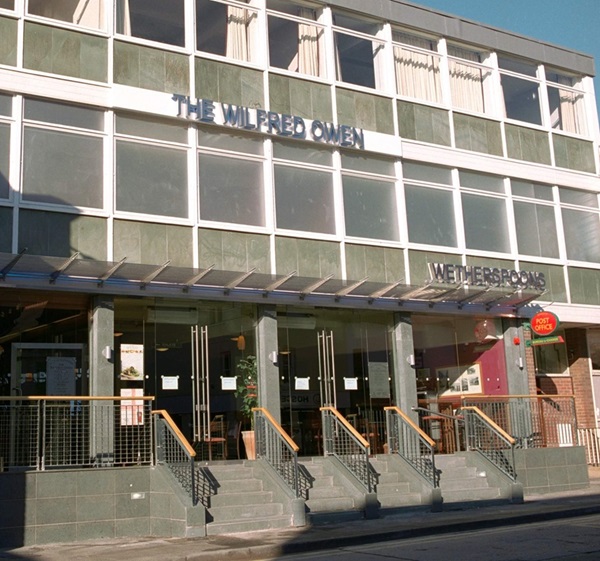
Extract from Wetherspoon News Autumn 2018.
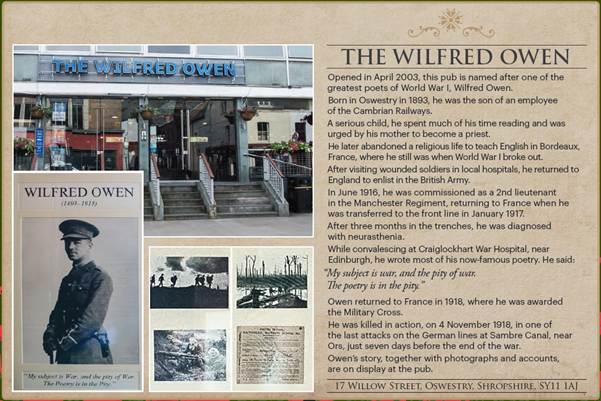
If you have information on the history of this pub, then we’d like you to share it with us. Please e-mail all information to: pubhistories@jdwetherspoon.co.uk